Occupational Safety Training for Lifting Equipment Operation
99,000 ₫
Note: The above price is calculated for one person and may fluctuate depending on the number of course participants and market movements. For more accurate pricing support, please refer to the pricing table or contact our consulting staff directly.
Occupational safety is an important issue when operating lifting equipment and needs to be addressed promptly to ensure the health and safety of workers and enhance the reputation of businesses here. The Occupational Safety Training course is one of the effective solutions to raise awareness about accident prevention for workers operating lifting equipment.
Table of Contents
Toggle1. Overview of Lifting Equipment
a. What is Lifting Equipment?
Lifting equipment is a type of tool or machinery used to lift and move heavy or bulky items from one location to another. These devices are commonly used in various industries, including construction, transportation, manufacturing, and many other applications.
Some common examples of lifting equipment include:
- Cranes: These are lifting machines with a U or S-shaped structure suspended at the top or outside a column, used to lift and move heavy items using cables or chains.
- Forklifts: A forklift is a type of vehicle capable of lifting and moving goods. They can be used in warehouses, manufacturing plants, retail stores, and many other places.
- Mobile Cranes: This type of crane has wheels and is used to lift and move goods in outdoor environments or on unstable ground.
- Tower Cranes: A tower crane is a high-lifting device with a tall tower, commonly used in construction to lift and move materials and equipment to high floors.
Lifting equipment plays an important role in increasing productivity and safety in lifting and moving heavy and bulky goods, and they are designed to ensure safety and efficiency during use.

b. Applications of Lifting Equipment in Manufacturing
Lifting equipment has many important applications in the manufacturing process, helping to improve efficiency, safety, and effectiveness in handling and transporting heavy and bulky items. Below are some common applications of lifting equipment in manufacturing:
- Lifting and moving goods: Forklifts, cranes, and other lifting equipment are used to lift and move heavy items such as pallets, machinery, raw materials, and finished products in warehouses and manufacturing plants.
- Warehouse production: In just-in-time (JIT) manufacturing, forklifts and other lifting equipment are used to move materials and products between production and storage areas within the warehouse.
- Product assembly: Lifting equipment can be used to lift and position parts and components during the assembly process. Cranes and tower cranes can help accurately position components and lift them into place.
- Lifting and changing industrial tools: In some cases, lifting equipment is used to lift and change industrial tools or machinery to adjust production for different products.
- Maintenance and repair: Lifting equipment can be used to lift machinery and equipment that require maintenance or repair, saving time and effort in maintaining and repairing production devices.
- Transporting raw materials: Forklifts and cranes are also used to transport raw materials from storage areas to production machines, ensuring continuous manufacturing processes.
- Handling special materials: In industries such as chemicals and food, lifting equipment may be designed to handle and transport special materials, such as corrosive chemicals or packaged food products.
Thanks to the variety of lifting equipment and the ability to adapt them for specific applications, they play an important role in optimizing production processes while ensuring safety and efficiency.

c. Which Industries Use Lifting Equipment
Lifting equipment is widely used across many industries due to its ability to lift and move heavy and bulky items. Below are some common manufacturing industries that use lifting equipment:
- Construction Industry: In construction, tower cranes and other cranes are used to lift and move construction materials such as concrete, steel, and bricks, as well as to build large buildings and structures.
- Manufacturing and Industrial: In manufacturing and industrial sectors, forklifts and other lifting equipment help move, lift, and place machinery, raw materials, finished products, and other production components.
- Automotive Industry: In automobile manufacturing, cranes and industrial robots are often used to lift and move car parts and assemble them into vehicles.
- Aerospace Industry: Tower cranes and mobile cranes are used to assemble and maintain aircraft and spacecraft.
- Chemical and Oil & Gas Industry: In this sector, special cranes and lifting equipment are used to handle and transport chemicals and bulky equipment.
- Food and Packaging Industry: Forklifts are used to move goods within food processing plants and storage facilities.
- Technology and Electronics Industry: In producing electronic and computer products, cranes and lifting equipment help move and assemble components and devices.
- Healthcare Industry: In healthcare, cranes and forklifts can be used to transport and assemble heavy medical equipment such as CT scanners or surgical devices.
- Energy Industry: In the energy sector, cranes and lifting equipment are used to construct and maintain energy facilities such as power plants, substations, and renewable energy installations.
- Paper and Printing Industry: Lifting equipment helps handle and move large rolls of paper and printing machinery.
2. Overview of Occupational Safety Training for Lifting Equipment Operation
a. What is Occupational Safety Training?
- Occupational safety training for lifting equipment operation consists of lessons that equip workers with awareness on preventing workplace accidents. Workers directly operating lifting equipment belong to group 3.
- The safety training course helps workers identify and avoid hazards, reducing risks of workplace accidents during operations.
REGISTER FOR OCCUPATIONAL SAFETY TRAINING SERVICE
b. Training Duration
Initial safety training duration
- Total training time is at least 24 hours, including exam time.
- 8 hours of theoretical study on policies and laws regarding occupational safety and hygiene
- 8 hours of theoretical study on basic knowledge of occupational safety and hygiene
- 4 hours of theoretical study on specialized training content
- 2 hours of practical study on specialized training content
- 2 hours of theoretical exam at the end of the course
The safety training center will divide the time into multiple sessions depending on the workers’ schedule. Usually, there are 6 sessions, and the course lasts 3 days, provided the company arranges continuous learning time.
Periodic safety training duration
- Before the occupational safety card expires, workers seeking renewal must undergo a periodic occupational safety training, with periodic training duration of at least 50% of the initial training duration.
Explanation: total periodic occupational safety training time is at least 12 hours, including exam time. After completing the course and passing the exam, workers will receive a renewed occupational safety card.
c. Training Content
| No. | TRAINING CONTENT | TRAINING TIME (HOURS) | |||
| Total | Including | ||||
| Theory | Practice | Exam | |||
| I | System of policies, laws on occupational safety and hygiene | 8 | 8 | 0 | 0 |
| 1 | Overview of the system of legal documents on occupational safety and hygiene. | 6 | 6 | ||
| 2 | System of safety and hygiene technical standards and regulations. | 1 | 1 | ||
| 3 | Specific regulations by state management agencies on occupational safety and hygiene when constructing, expanding, or renovating facilities, and for production, usage, storage, and inspection of machinery, equipment, materials, and substances requiring strict occupational safety and hygiene compliance. | 1 | 1 | ||
| II | Basic knowledge of occupational safety and hygiene | 8 | 8 | 0 | 0 |
| 1 | Basic knowledge of hazardous and harmful factors in the workplace. | 4 | 4 | ||
| 2 | Methods to improve working conditions. | 1 | 1 | ||
| 3 | Safety culture in production and business. | 1 | 1 | ||
| 4 | Rights and responsibilities of employers and workers; safety policies and regimes; functions and duties of the safety network and safety officers. | 1 | 1 | ||
| 5 | Occupational safety rules, signage, use of safety equipment and personal protective equipment; skills in first aid, accident prevention, and occupational disease prevention. | 1 | 1 | ||
| III | Specialized training content | 6 | 4 | 2 | 0 |
| Comprehensive knowledge of machinery, equipment, and substances producing hazardous factors; analysis, risk assessment, occupational safety and hygiene management, safe working procedures with machines, equipment, and substances requiring strict safety and hygiene compliance. | 6 | 4 | 2 | ||
| IV | Final training assessment | 2 | 2 | 0 | 0 |
| Total | 24 | 22 | 2 | ||
See more training content of 6 groups
d. Occupational Safety Card
After completing the occupational safety training course and passing the exam, workers will be issued an occupational safety card (commonly called occupational safety certificate group 3).
The group 3 safety card shows details such as full name, date of birth, job, and specific work environment. It also includes training duration, a red seal, and signature confirming course completion.
According to the safety card issuance regulations in clause 2 of Article 24, Decree 44/2016/ND-CP, there are two cases:
- If the employer and the worker have an employment contract, the employer must sign, stamp, and validate the safety card for the group 3 worker after completing the training from an occupational safety training unit and passing the exam.
- If the worker is freelance or temporary, without an employment contract, the training unit must sign, stamp, and validate the safety card after the worker completes the training and passes the exam.

3. Hazards When Operating Lifting Equipment
Operating lifting equipment can pose many hazards if safety rules are not followed and equipment is not used properly. Here are some common hazards when operating lifting equipment:
- Overload risk: Operating lifting equipment with loads exceeding its capacity can cause damage or collapse, resulting in injury to the operator and danger to others nearby.
- Falling objects: If cargo is not properly considered and lifted correctly, it may fall from the lifting equipment, causing injury to the operator or others.
- Jamming, tilting, and tipping equipment: Moving or lifting cargo incorrectly can cause jamming, tilting, or tipping of the equipment, creating serious hazards.
- Danger zones and collisions: Operators must be aware of danger zones around lifting equipment and stay alert to avoid collisions with other objects, equipment, or people in the work area.
- Not using personal protective equipment (PPE): If operators do not wear helmets, safety glasses, gloves, or proper safety shoes, they may be at risk of injury in the event of an accident.
- Not following safety rules: Any failure to comply with safety rules or operating instructions can create hazards. Ignoring restrictions or special operational regulations is particularly dangerous.
- Equipment malfunction or improper maintenance: Lifting equipment must be maintained regularly to ensure proper operation. Malfunction or lack of maintenance can lead to accidents.
- Insufficient training: Operators must be fully trained in using lifting equipment and understanding safety rules. Lack of training can create serious hazards.
To avoid these hazards, operators must follow all safety regulations, ensure that the lifting equipment is functioning properly, and take protective measures for themselves and others in the work area.
4. Measures to Control Occupational Accidents When Operating Lifting Equipment
To control and minimize occupational accidents when operating lifting equipment, specific safety measures must be implemented. Here are some important measures to ensure safety when working with lifting equipment:
- Training and certification: Ensure that all lifting equipment operators are fully trained and have the corresponding certificates. They need to understand how to use the equipment, safety rules, and relevant regulations.
- Equipment inspection before use: Before starting work, operators must inspect lifting equipment to ensure it is functioning properly and has no defects or technical issues. Any problems must be reported and fixed before use.
- Safety markings and guidance: Ensure that the work area is clearly marked with danger zones and safety instructions. Signs and symbols should be used to warn workers of potential hazards.
- Use of personal protective equipment (PPE): Ensure that operators and people near lifting equipment wear the proper PPE such as helmets, safety glasses, gloves, and safety shoes.
- Correct working posture: Operators should be trained on proper standing and working posture to avoid basic injuries. They should maintain a straight back and use strong body parts to lift and move loads.
- Limit overloading: Adhere to the allowable load limits of the lifting equipment. Never lift loads heavier than the specified capacity.
- Monitoring and communication: Ensure that operators can always monitor their surroundings and communicate with others in the work area, especially during lifting or moving operations.
- Ensure a safe work area: Protect the area around lifting equipment from unnecessary access and keep the work area clean and free from obstacles.
- Emergency situation training: Operators should be trained on handling emergencies such as collapses, accidents, or fires.
- Incident reporting: Learn to report incidents or accidents immediately and implement corrective and preventive measures.
- Periodic inspection of lifting equipment to detect early safety issues such as mechanical damage, wear, or malfunction, thereby reducing the risk of occupational accidents.

5. Benefits of Occupational Safety Training
An Toan Nam Viet provides your business with the following benefits upon completing occupational safety training courses in accordance with Decree 44/2016/ND-CP on Occupational Health and Safety for companies and enterprises.
- Employees can identify potential occupational hazards and take preventive measures to avoid accidents.
- Your business can establish risk prevention measures in production, operation, and maintenance processes.
- Minimize costs associated with workplace safety risks.
- Uninterrupted production helps increase labor productivity and product quality.
- Ensure compliance with labor safety laws and avoid legal risks.
- Enhance credibility and professionalism in all aspects, thereby improving your brand image.
Nam Viet’s training courses are solutions to prevent and counteract external factors affecting individuals, helping them avoid hazards that could cause injury or even death.
REGISTER FOR OCCUPATIONAL SAFETY TRAINING SERVICE
6. Customer Feedback After Completing the Training Course
An Toan Nam Viet has years of experience accompanying many businesses in Vietnam in general and in southern provinces in particular. This responsibility is invaluable to Nam Việt, which is why our Occupational Safety Training is increasingly professional. The growth and strength of An Toan Nam Viet come from positive feedback and suggestions from businesses. Below are feedbacks from partners we have served.
See more customer interviews after using our services at An Toan Nam Viet
7. Occupational Safety Training Capability of An Toan Nam Viet
An Toan Nam Viet is a reputable and quality occupational safety training center in Vietnam. Our training sessions take place continuously at factories, workshops, and construction sites across the country (all 63 provinces in Vietnam).
REGISTER FOR OCCUPATIONAL SAFETY TRAINING SERVICE
Occupational Safety Training License
- An Toan Nam Viet has been inspected and certified by the Department of Safety under Ministry of Labor – Invalids and Social Affairs, certifying that we meet occupational safety training requirements. This strengthens our occupational safety training capabilities.

Training Materials and Lectures
- Before training materials are used in Occupational Safety Courses, they are reviewed to ensure accurate knowledge and effective application.
- Teaching methods of instructors are standardized according to An Toan Nam Viet teaching standards, developed by experts in occupational safety training to maximize knowledge absorption.
Facilities
- Controlling classroom factors affecting training enhances teaching performance and learning outcomes.
- Our training facilities provide spacious classrooms with standard area, lighting, and training equipment.
8. Nationwide Reputable and Quality Training Center
At An Toan Nam Viet, we prioritize professional dedication in occupational safety training. We aim to equip workers with knowledge to protect themselves safely in their daily work, contributing to national development.
To ensure effective training, we meticulously prepare even the smallest details, from tools, teaching equipment to curriculum, documents, audio, and lighting.
Our instructors are experts with many years of experience, including research on hazard identification across industries and preventive measures.
Lectures are practical, vivid, and easy to understand, helping workers comfortably absorb knowledge. All content aligns with Decree 44/2016/ND-CP.
Employees learn hazard prevention and self-protection measures, applying them appropriately in real work situations.
Our training center prides itself on being a reputable, professional occupational safety training provider with advantages:
- Competitive training costs without compromising quality.
- Flexible training schedules according to company production needs.
- Quick and compliant certification procedures.
- Experienced instructors with many years in the field.
- Classroom conditions controlled to enhance teaching performance and knowledge retention.
- Curriculum tailored to occupational safety for enterprises.
- Dedicated and professional service to support clients accurately and promptly.

9. Additional Occupational Safety Training Materials
- Occupational Safety Materials for Lifting Equipment Operation 1
- Occupational Safety Training Materials for Lifting Equipment 2
- Set of Occupational Safety Training Materials
- Occupational Safety Test Set
- Occupational Safety Training Curriculum for Lifting Equipment Operation
- Occupational Safety Quiz for Lifting Equipment Operation
10. Occupational Safety Training Activities
- VITADAIRY VIETNAM JOINT STOCK COMPANY
- NONG LAM ENVIRONMENTAL TECHNOLOGY CO., LTD.
- GIA DO IMPORT-EXPORT TRADING AND MANUFACTURING CO., LTD.
- KHANG GIA MANUFACTURING AND TRADING CO., LTD.
- TAN A NGHE AN ONE-MEMBER PRODUCTION AND TRADING CO., LTD.
- ORGANO (VIETNAM) CO., LTD.
- IPA VIETNAM ENVIRONMENTAL PROTECTION TECHNOLOGY CO., LTD.
1 review for Occupational Safety Training for Lifting Equipment Operation
No comments yet

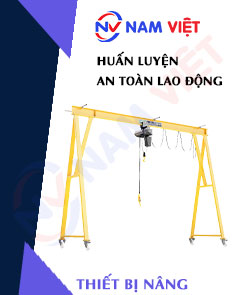
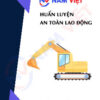
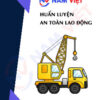






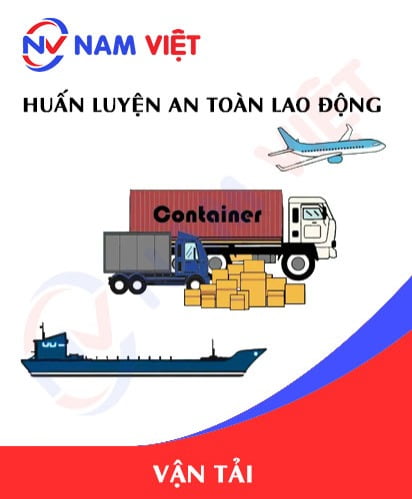

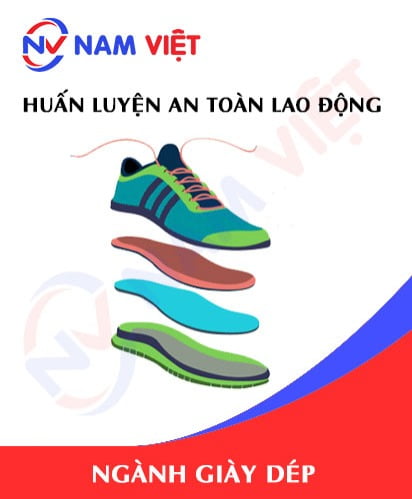


phanminhhang341
The lecturer teaches very lively and easy to understand!